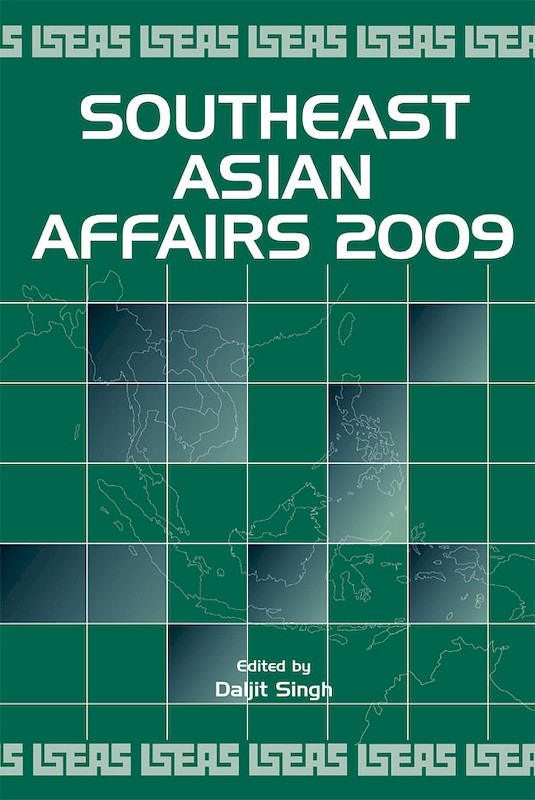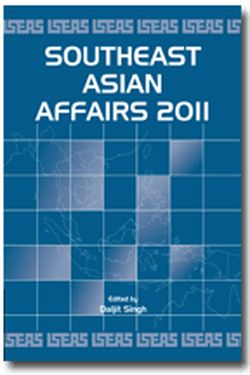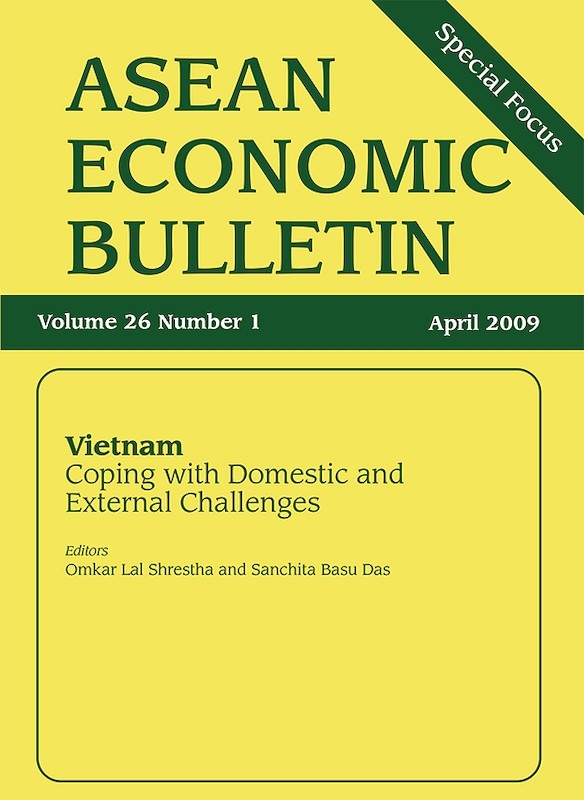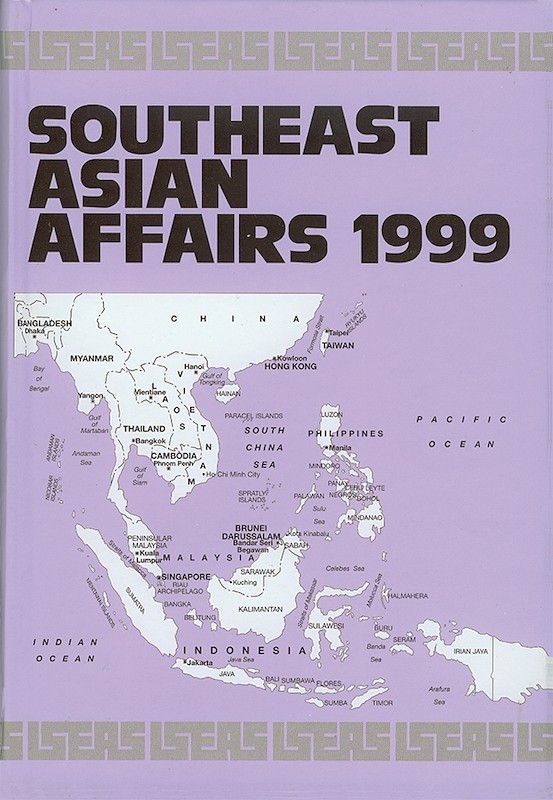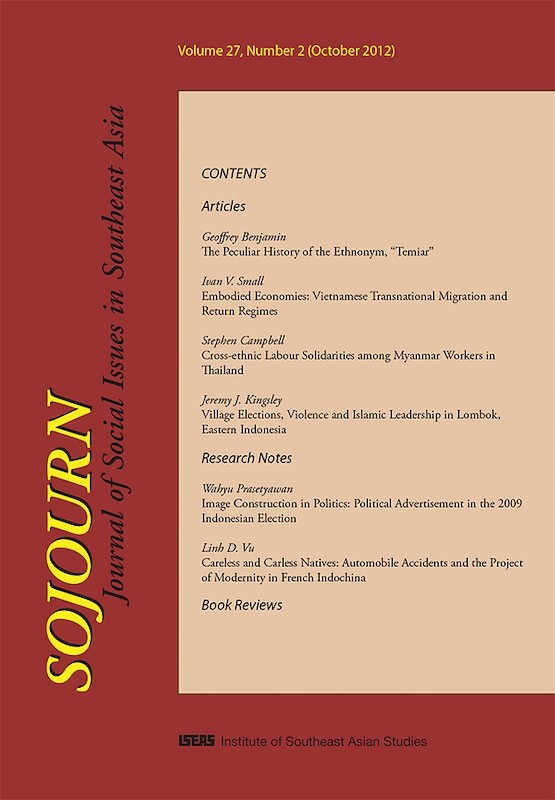Southeast Asian Affairs 2010
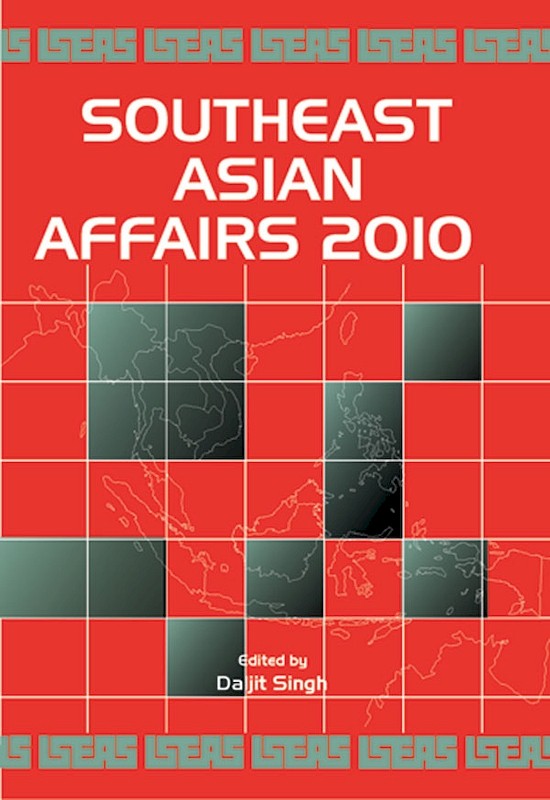
Daljit Singh, editor
Date of publication:
2010
Publisher:
Institute of Southeast Asian Studies
Number of pages:
409
Code:
SEAA10
About the publication
"Founded in 1974, Southeast Asian Affairs provides, without fear or favour, informed and in-depth annual analyses of this vibrant region and its component countries. It is the only publication which does this and is in its own class without peers. It is a mandatory reference and read for those seriously interested in knowing Southeast Asia."
-Professor A.B. Shamsul, Founding Director, Institute of Ethnic Studies, Universiti Kebangsaan Malaysia
"Now in its 37th edition, Southeast Asian Affairs offers an indispensable guide to this fascinating region. Lively, analytical, authoritative, and accessible, there is nothing comparable in quality or range to this series. It is a must read for academics, government officials, the business community, the media, and anybody with an interest in contemporary Southeast Asia. Drawing on its unparalleled network of researchers and commentators, ISEAS is to be congratulated for producing this major contribution to our understanding of this diverse and fast-changing region, to a consistently high standard and in a timely manner."
-Hal Hill, H.W. Arndt Professor of Southeast Asian Economies, Australian National University.
-Professor A.B. Shamsul, Founding Director, Institute of Ethnic Studies, Universiti Kebangsaan Malaysia
"Now in its 37th edition, Southeast Asian Affairs offers an indispensable guide to this fascinating region. Lively, analytical, authoritative, and accessible, there is nothing comparable in quality or range to this series. It is a must read for academics, government officials, the business community, the media, and anybody with an interest in contemporary Southeast Asia. Drawing on its unparalleled network of researchers and commentators, ISEAS is to be congratulated for producing this major contribution to our understanding of this diverse and fast-changing region, to a consistently high standard and in a timely manner."
-Hal Hill, H.W. Arndt Professor of Southeast Asian Economies, Australian National University.
Co-publication: Institute of Southeast Asian Studies
Institute of Southeast Asian Studies
Contents
-
Southeast Asian Affairs 2010
[Whole Publication] -
Preliminary pages
- THE REGION
-
Southeast Asia in 2009: A Year Fraught with Challenges, by Joseph Chinyong Liow, author see abstractSoutheast Asian regionalism is at a crossroads. With the signing of the ASEAN Charter and the birth of the ASEAN Intergovernmental Commission on Human Rights, recent years have witnessed significant advances in regional integration. Further to that, it is clear that relations between ASEAN and major dialogue partners have also progressed over the past year, albeit at a difference pace. The salience of these developments, however, has to some extent been eclipsed by the emergence of major trends over the past twelve months. These include severe strains on several bilateral relationships between Southeast Asian states, the postponement of an ASEAN Summit under dramatic circumstances, and the emergence of new conceptions of regionalism that threaten to displace ASEAN, along with its norms and values, as the core of multilateral initiatives in the Asia-Pacific region. These developments could well portend serious challenges for the region in the near future.
-
Review of Southeast Asian Economic Developments, by Manu Bhaskaran, author see abstractManu Bhaskaran examines the impact of the global crisis on Southeast Asian economies, explains their relative resilience, and looks at the prospects for 2010. He then goes on to look at the longer-term trends and challenges for Southeast Asian economies and suggests elements of a broad policy framework to cope with a changed global economic environment.
-
The United States and China in Southeast Asia: Conflict or Convergence?, by Robert Sutter, author see abstractRobert Sutter argues that the U.S.-China relationship rests on a common commitment to avoid conflict, cooperate in areas of common interest, and prevent disputes from shaking the overall relationship. The Sino-American competition for influence in Southeast Asia will continue but it is a secondary priority for both government and neither country will allow it to seriously disrupt the overall relationship.
-
The Year in ASEAN: The Charter, Trade Agreements, and the Global Economic Crisis, by Rodolfo C Severino, author see abstractThe year 2009 saw the start of the implementation of the ASEAN Charter and the establishment of the ASEAN Intergovernmental Commission on Human Rights. It also saw the establishment of new free trade agreements with outside countries. Contrary to some media expectations, these developments by themselves did not, and by the nature of things could not, result in sudden or dramatic changes in ASEAN or its trade relations with outside countries. They should be viewed in perspective as part of a long term trend whose effectiveness or ultimate outcome remains uncertain and unpredictable. Likewise it may be too early to judge the impact of the global economic crisis on Southeast Asia and how Southeast Asia is responding to the crisis.
- BRUNEI DARUSSALAM
-
Brunei Darussalam in 2009: Addressing the Multiple Challenges, by Pushpa Thambipillai, author see abstractBrunei Darussalam was prepared for marginal growth as the result of the global recession, which saw falling foreign investment and lower prices for oil. Energy and food security were top on its policy priorities, in addition to other socio-economic policies that emphasized the welfare of its citizens, especially the poorer segments of society. The political and administrative leadership also stressed the need to build more responsive, dedicated, and trained human resources to meet the various national challenges. On the whole, Brunei in 2009 enjoyed peace and stability domestically; externally, it continued to engage other countries and issues in line with its modest aspirations.
- CAMBODIA
-
Cambodia in 2009: The Party's Not Over Yet, by Caroline Hughes, author see abstractThe contraction of the economy after five years of high growth did not bring about social or political unrest. Prime Minister Hun Sen continued to ride high in popularity and there was further entrenchment of his Cambodian People's Party hold on local politics. The Khmer Rouge tribunal continued its work but the handful of punishments which it is likely to deliver will neither adversely affect stability nor reform Cambodia towards becoming a country governed by the rule of law. The diplomatic row with Thailand did not seem to affect day-to-day business relations between the two countries.
- INDONESIA
-
Indonesia in 2009: Democratic Triumphs and Trials, by Edward Aspinall, author see abstractThis was President Susilo Bambang Yudhoyono's year. With his party coming first in the national legislative elections in April, and winning a landslide victory in the first round of presidential elections in July, Yudhoyono becomes the first post-Suharto president to serve more than one term, and the first Indonesian president to be democratically re-elected. His government could also claim other significant achievements in 2009, including continuing positive economic performance, largely sparing Indonesia from the worst effects of the global financial crisis, and, after two bombings in Jakarta in July, the killing by police of key Islamist terrorists. Yet amidst the triumphs, both for the president and for Indonesian democracy, there were also serious stumbles. The administration of the elections was badly bungled so badly that had the margin of Yudhoyono's victory been narrower, the very legitimacy of his victory may have been in doubt. Even more seriously, in the final months of 2009, the President's efforts to set out an agenda for his second term were overshadowed by a series of interconnected corruption scandals that exposed serious misdeeds and a culture of pervasive mendacity in the bureaucracy. The ensuing public controversy not only cast a pall over the president's much vaunted achievements on the anti-corruption front but also pointed to underlying systemic problems in Indonesian democracy.
-
The Impact of Domestic and Asian Regional Changes on Indonesian Foreign Policy, by Dewi Fortuna Anwar, author see abstractDewi Fortuna Anwar explains how democracy and multiple centres of power - in particular a powerful Parliament - now have an important role in the formulation and execution of foreign policy. While ASEAN remains a cornerstone of Indonesia's foreign policy, the emphasis on democracy and human rights has introduced new priorities and attitudes which affect Indonesia's relations with its ASEAN neighbours. She also explains how Indonesia is engaging the major powers through its free and active foreign policy.
- LAOS
-
Lao People's Democratic Republic in 2009: Economic Performance, Prospects, and Challenges, by Omkar Lal Shrestha, author see abstractWhile the Lao PDR is among the weakest ASEAN economies, it is also an economy that has been growing at over 7 per cent for the past several years. Even during the global economic crisis in 2009, it registered a respectable growth of 6.4 per cent. The economy is projected to grow at a pre-global crisis level of 7.5 per cent. Having applied for WTO membership in 2007, the country is engaged in a range of reform measures transiting to a market economy, promoting the private sector, and opening the economy to external trade and foreign investment. Although the country has been managing the economy well and its natural endowments with prudence, the country remains constrained by inadequate infrastructure, shortage of skilled human resources, heavy dependence on external capital for investment, and a large proportion of the population subsisting on agriculture. Growth needs to be diversified to multiple sources shifting away from its current narrow base of mining and hydropower. An emphasis on pro-poor growth placing priority on employment generation through private sector initiatives will be important. As cross-border roads and highways emerge in the region, the Lao PDR carries the potential to convert itself from a landlocked nation into a land-linked country to its neighbours. The country's medium-term growth prospects remain encouraging.
-
Laos: Crisis and Resource Contestation, by Holly High, author see abstractLaos in 2009 must be understood in terms of the many crises that unfolded throughout the year, and the contestation over resources that these heightened. While many of these critical situations have been developing for some time now, their cascading coalescence in 2009 gave this year a particular poignancy. They highlighted through stress and pressure not only Laos's deep engagements in regional and global dependencies, but also fractures and weaknesses in the Lao political, economic, and social setting. In particular, they highlighted the potentials but also dangers associated with resource exploitation. While resource exploitation is now Laos's main strategy for achieving development goals, the process is marked by unusually public conflict over associated rights and responsibilities. This contestation takes place largely in the idiom of corruption and poverty. The fights against corruption and poverty are used in official pronouncements to rationalize new regulations and initiatives. It also appears in everyday resource contestation as citizens use these concepts to gauge the legitimacy of state interventions. Such oblique forms of contestation are unlikely to significantly undermine existing political arrangements, but they do demonstrate the contradictions of political authority in contemporary Laos.
- MALAYSIA
-
Malaysia: The Rise of Najib and 1Malaysia, by James Chin, author see abstractThe year 2009 will be remembered as the one in which Malaysia saw its first political dynasty come to fruition. Najib Tun Razak, the son of Abdul Razak who was Malaysia's second Prime Minister, became Malaysia's sixth PM. At the start of the year, the People's Pact (PR or Pakatan Rakyat) under Anwar Ibrahim appeared to still have the political momentum generated by the general elections. However, as the year progressed, it was clear that Najib managed to get the upper hand over Anwar and the opposition. Najib was a much more wily politician. Polls showed that BN would probably win back the two-thirds majority if a general election was held in late 2009. More importantly, Najib had strong support in UMNO, and his advisors were able to project only the positives and discard the negatives. One simple explanation for this is that Najib is still on his honeymoon period with the polity as 2009 was his first year in office. His clever use of the slogan "1Malaysia. People First, Performance Now" appeared to have captured the people's imagination, and new initiatives were designed to meet the major criticism of the government's delivery system. Najib's strategy was simple: as long as the government can deliver a better life and living standard, the public will support the BN despite issues with good governance, increasing Islamization, ethnic politics and high-level corruption.
-
The Limits of Malay Educational and Language Hegemony, by Lee Hock Guan, author see abstractThe Malaysian state's policies to institutionalize and expand Malay as the dominant language in the national educational system has led to the marginalization of minority languages. Ethnic minority groups have mobilized to struggle for their language rights: the Chinese, to enhance the status of Chinese medium education; the other non-bumiputra groups to have the teaching of their languages as subjects in the national education system. It was to protect the Chinese medium schools that the Chinese, and for different reasons many Malays also, resisted the policy of teaching of science and mathematics in the English medium in 2002, a policy that was retracted in 2009. The Malay-dominated education bureaucracy's discrimination against minority languages, cultures, and religions in the national education system have led to an ethnic segmentation of schools as 90 per cent of Chinese students are enrolled in Chinese primary schools.
- MYANMAR
-
Myanmar in 2009: On the Cusp of Normality?, by Robert H. Taylor, author see abstractMyanmar in 2009 was mainly preoccupied with bizarre trials and renewed diplomatic engagement. National League for Democracy General Secretary Daw Aung San Suu Kyi and others were tried and convicted of receiving an uninvited American male to her residence and the United States Government attempted to open a dialogue with the ruling military State Peace and Development Council. The most dramatic event of the year occurred on the border resulting in an armed clash between government troops and a faction of the Kokang ceasefire group. However, this was quickly quelled and peace largely prevailed across the land. There were no further moves at political reconciliation as the NLD and the SPDC stuck firmly to their pre-existing positions. Similarly, regional political and economic relations remained much the same, with a deepening of ties with India and China.
-
Ethnic Politics in Myanmar: A Year of Tension and Anticipation, by Martin T Smith, author see abstractMartin Smith surveys Myanmar's ethnic landscape as different parties and stakeholder groups began to position themselves in relation to the promised 2010 general election. A decision to contest, boycott, or confront the polls could decide the fate of individual nationality movements for years to come. A key issue for many who contest will be how much representation and self-administration they will enjoy, especially in the state or regional legislatures. Other ethnic groups will oppose the polls, and, if some important ceasefire arrangement breaks down there could also be renewed ethnic conflict and insurgency. The author observes that Myanmar's accelerated economic engagement with neighbouring countries also has a bearing on the ethnic minorities since many of the major energy, trade, and infrastructure projects involve ethnic minority borderlands.
- THE PHILIPPINES
-
The Philippines in 2009: The Fourth-Quarter Collapse, by Herman Joseph S Kraft, author see abstractIn the first half of 2009 the Philippines was coping with the global economic crisis better than expected. However, the natural disasters in the second half exposed the vulnerabilities of the country which are attributable to shortcomings in governance and state effectiveness. Election related violence, highlighted by the brazen Maguindanao Massacre, exposed yet again the feudal nature of local politics and the existence of private armies. The author draws attention to the failure of the political class to provide the leadership needed to address the long-term needs of the country. Meanwhile the conflicts with the New People's Army and the Abu Sayyaf Group continued. One bright spot was the resumption of peace talks between the government and the Moro Islamic Liberation Front, though the negotiations are likely to be difficult.
- SINGAPORE
-
Singapore in 2009: Braving a Grave New World, by Azhar Ghani, author see abstractAfter growing at an average growth of close to 8 per cent from 2004 to 2007, Singapore's economy went into a dive at the end of 2008, plunging the year 2009 into a sea of trepidation. At the end of 2009, official estimates projected growth for the year at -2.5 to 2 per cent. This reversal of fortunes, brought about by a global financial crisis that many believe has resulted in permanent shifts in the world economic order, threw up challenges that went beyond economics. Indeed, even as the government grappled with the task of steering the country through the prevailing crisis, questions were being asked not just of the wisdom of its long-term growth strategy, but also of the benefits of its recent economic achievements.
-
Rooting for the Future: Views for the Heritage Sector in Singapore, by Michael Koh, author see abstractRenewed interest in Singapore's heritage and culture among the general public has grown in recent years, with the number of visitors to museums and heritage outreach activities reaching an all-time high. This may be attributed to a wider range of educational and lifestyle interests in heritage activities, as well as the effective tapping of new segments of the population with heritage and cultural products. A city's success is measured by more than just its economic output: As Singapore continues to grow into a truly cosmopolitan city, the unseen pillars of our heritage will take on bigger roles in anchoring the hearts and minds of the people. In this paper, Mr Michael Koh - CEO of the National Heritage Board - pens his opinions of Singapore's heritage landscape and discusses ten strategies that will propel Singapore to the next level of heritage awareness and engagement.
- THAILAND
-
Thailand in 2009: Unusual Politics Become Usual, by Chairat Charoensin-o-larn, author see abstractOn the surface, the Thai political landscape in 2009 was smoother than in the previous year, which had been marked by turmoil and the absurd brand of street politics carried out by the yellow-shirt PAD. Thailand in 2009 was relatively more tranquil but still plagued with many problems resulting from the profound political division following the 19 September 2006 coup. It seems that since early 2009 the same old-style politics of co-optation by politicians and the Thai power elite has overtaken the street politics of the previous year. However, this belies some fundamental changes in Thai society and politics. The most remarkable is the rise of new political actors - mainly the red shirts - who are equipped with a new political consciousness and rising expectations. Therefore, it is argued here that the Thai political landscape in 2009 was not quite the same politics as usual that the Thai elites might have imagined when they successfully installed the Abhisit-led government. The political divide remained real and intense in 2009.
-
"Unity" as a Discourse in Thailand's Polarized Politics, by Pavin Chachavalpongpun, author see abstractThailand continues to suffer from its protracted political crisis. Since the military coup of 2006, political polarization has been deepened and the conflicts have occasionally turned violent. The widening gap between the two opposing political camps, one that supports former Prime Minister Thaksin Shinawatra and the other that protects the interests of the Bangkok elite, is indeed threatening the much-celebrated Thai discourse of "unity". This is taking place in the country which has never been officially colonized and proud of its independence thanks to, as Thai leaders claimed, the national trait of unity. Yet, recent developments in politics suggest that "unity" might now be obsolete. Thus, when Thai elite call for reconciliation, it raises a question of whether such a call is a genuine suggestion of how the conflicts should be resolved, or in fact the latest political manoeuvring in defending their power position in the face of growing political dissent.
- TIMOR-LESTE
-
Timor-Leste in 2009: Marking Ten Years of Independence or Dependence on International "Assistance"?, by Selver B. Sahin, author see abstractTimor-Leste enjoyed relative stability and security in 2009 compared with the previous period between 2006 and 2008. Little progress was however made towards addressing the underlying factors that caused the 2006 crisis - reforming the security sector, strengthening the rule of law, and reducing poverty. While these issues pose a serious potential challenge to the country's long-term political stability and social cohesion, the international community continues to 'assist' with the national recovery and sustainable development process.
- VIETNAM
-
Vietnam: A Tale of Four Players, by Alexander Vuving, author see abstractWho are the key players of Vietnamese politics? What characterizes its dynamics? What is to be expected of it in the next few years? This essay is an attempt to address the above questions. It suggests that the Vietnamese government is caught primarily between regime conservatives, modernizers, rent-seekers, and China. The politics of Vietnam is featuring four dynamics including the confluence of money, power, and world views, the crisis of Vietnam's growth model, the rise of mainstream elite civil society, and Vietnam's efforts to self-help in China's backyard. This essay will outline the contours of Vietnamese politics through an examination of its four players and four features, illustrated by events and developments throughout 2009. It concludes with forecasts about Vietnam's economic, domestic, and foreign policy in the near future.
-
Vietnam and Rising China: The Structural Dynamics of Mature Asymmetry, by Carlyle A. Thayer, author see abstractIn 2010 Vietnam and China will mark the sixtieth anniversary of the establishment of diplomatic relations in what they have designated as the Year of Friendship. Over the last six decades bilateral relations have swung from "as close to lips and teeth" to outright enmity when the two fought a border war in 1979. Relations were formally normalized in 1991 and subsequently developed into what both sides now characterize as a "strategic cooperative partnership". This essay provides an overview of how Vietnam manages its relations with a Rising China. It examines both party-state bilateral ties and multilateral mechanisms such as ASEAN and the Greater Mekong Sub-region. Vietnam, as the weaker partner in an asymmetric relationship, is ever sensitive to the policies of its northern neighbour. Vietnamese leaders want to engage China not confront it. But recent Chinese assertiveness in the South China Sea has served to arouse Vietnamese anxieties, stoke nationalist sentiments, and constrain policy options. There are signs that Vietnam will step up diplomatic efforts to prevent its maritime dispute with China from marring the Year of Friendship while at the same time quietly engage in internal balancing by building up a small but capable deterrent force to defend its maritime sovereignty claims.

